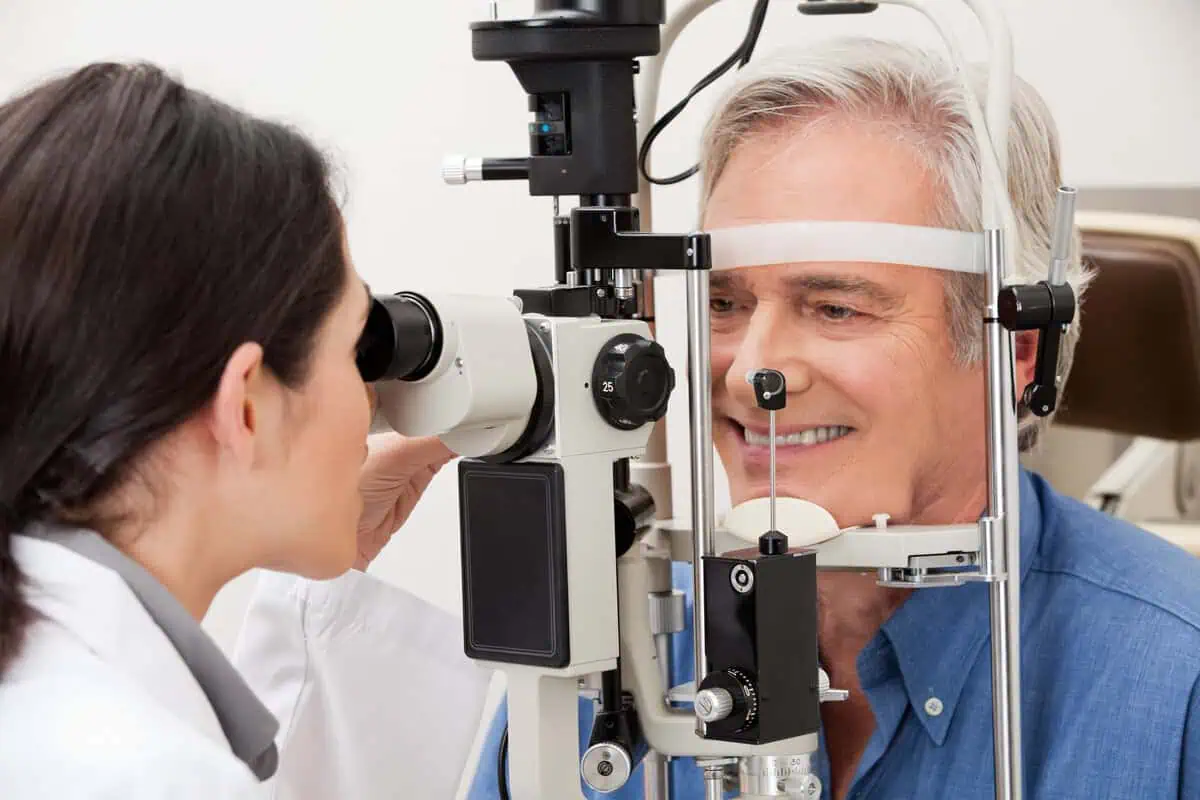
Visit Us Or Call Us Today
SCHEDULE YOUR APPOINTMENT WITH OUR EXPERT TEAM NOW

Glaucoma is a group of eye conditions that can cause blindness by damaging the optic nerve, crucial for vision. This damage is often associated with elevated pressure inside the eye.
Affecting millions worldwide, understanding glaucoma, its symptoms, causes, and treatment options is essential, especially for those at risk. Learning about glaucoma is the first step toward safeguarding your eye health if you’re in Cincinnati, OH, or anywhere else.
Glaucoma is often called the “silent thief of sight” because it can progress undetected until significant vision loss occurs. Initially, glaucoma does not cause any symptoms, which makes it particularly dangerous.
However, as the condition progresses, some signs may emerge, including blurry vision, seeing halos around lights, severe eye pain, headache, nausea, and vomiting.
These symptoms can vary depending on the type of glaucoma—open-angle glaucoma or angle-closure glaucoma—with the latter often presenting more acute and noticeable symptoms.
The primary cause of glaucoma is increased intraocular pressure (IOP), or pressure inside the eye, which can damage the optic nerve over time.
This increase in pressure can result from a buildup of aqueous humor, a fluid that circulates in the front part of the eye. Usually, this fluid exits the eye through a drainage system. In people with glaucoma, the fluid drains too slowly or not at all. Risk factors include:
Early detection through regular eye exams is critical in preventing vision loss due to glaucoma. During an eye exam, your optometrist or ophthalmologist will conduct several tests to measure your intraocular pressure (tonometry), inspect the drainage angle of your eye (gonioscopy), examine the optic nerve for damage (ophthalmoscopy), and test your peripheral vision (visual field test). These diagnostic tools are vital for an accurate diagnosis and the development of an effective treatment plan.
Glaucoma’s stealthy progression underscores the importance of awareness and early detection. The disease primarily affects the elderly, but certain factors can elevate the risk across all ages. Understanding these risks is the first step toward proactive prevention.
There are a few (to several) factors that can increase your likelihood of developing glaucoma, including:
While you can’t change factors like age or genetics, certain lifestyle choices can help reduce your risk of developing glaucoma:
While glaucoma cannot be cured and vision lost to the disease cannot be restored, treatment can halt or significantly slow its progression. Treatment options aim to reduce intraocular pressure, including medications (eye drops), laser treatment, or surgery.
The specific approach depends on the type of glaucoma, its severity, and how it responds to treatment. Managing glaucoma is a lifelong process that requires regular monitoring and treatment adjustments.
When glaucoma is diagnosed, treatment begins immediately to halt the progression of the disease. Advances in medical science have introduced several effective treatments.
The first line of defense often involves prescription eye drops that reduce eye pressure, either by decreasing the eye’s use (or number) of fluid or improving its drainage. Consistency in using these medications is crucial for their success.
Laser trabeculoplasty is a standard procedure for open-angle glaucoma, helping improve drainage. A laser peripheral iridotomy may create a small hole in the iris for acute angle-closure glaucoma, enhancing fluid movement.
In cases where medication and laser therapy are not sufficient, microsurgery, such as trabeculectomy, may be recommended. This procedure creates a new drainage path to reduce intraocular pressure.
MIGS has emerged as an option for those needing surgery but looking for procedures with fewer complications and quicker recovery. These surgeries use tiny equipment and incisions, offering a safer alternative to traditional glaucoma surgeries.
Early detection and medication of glaucoma can preserve vision and quality of life. By understanding the risks, taking preventive measures, and utilizing the latest advancements in treatment, individuals can fight back against this “silent thief of sight.”
Regular eye exams are essential, particularly for those at higher risk, ensuring that any signs of glaucoma are caught and addressed promptly.
Your vision is irreplaceable, and at our clinic, we’re committed to providing you with the most advanced, personalized care possible. If you’re concerned about glaucoma or any aspect of your eye health, schedule an appointment today. Let’s work together to keep your vision clear and healthy for years.
For residents of Cincinnati, OH, accessing quality glaucoma care is crucial. Local eye care providers offer comprehensive services, from diagnosis to advanced glaucoma treatment options.
They work on the latest technologies and treatment methods to manage glaucoma effectively, helping patients maintain their vision and quality of life.
Glaucoma is a serious eye condition that, without proper diagnosis and treatment, can lead to irreversible vision loss.
Knowing the symptoms, understanding the causes, and seeking prompt diagnosis and medication are key to managing this eye disease. Regular eye exams are essential, especially if you are at higher risk for glaucoma.
If you or someone you know might be at risk for glaucoma, don’t wait for symptoms to appear. Protect your vision by scheduling an appointment for a comprehensive eye exam.
For those in Cincinnati, OH, looking for expert glaucoma care, reach out to us at Eyecare on the Square. Our team is dedicated to providing you with the best glaucoma treatment options and personalized care to ensure your eyes remain healthy for years.
Please book an appointment with us at Eyecare on the Square for your comprehensive eye care needs.